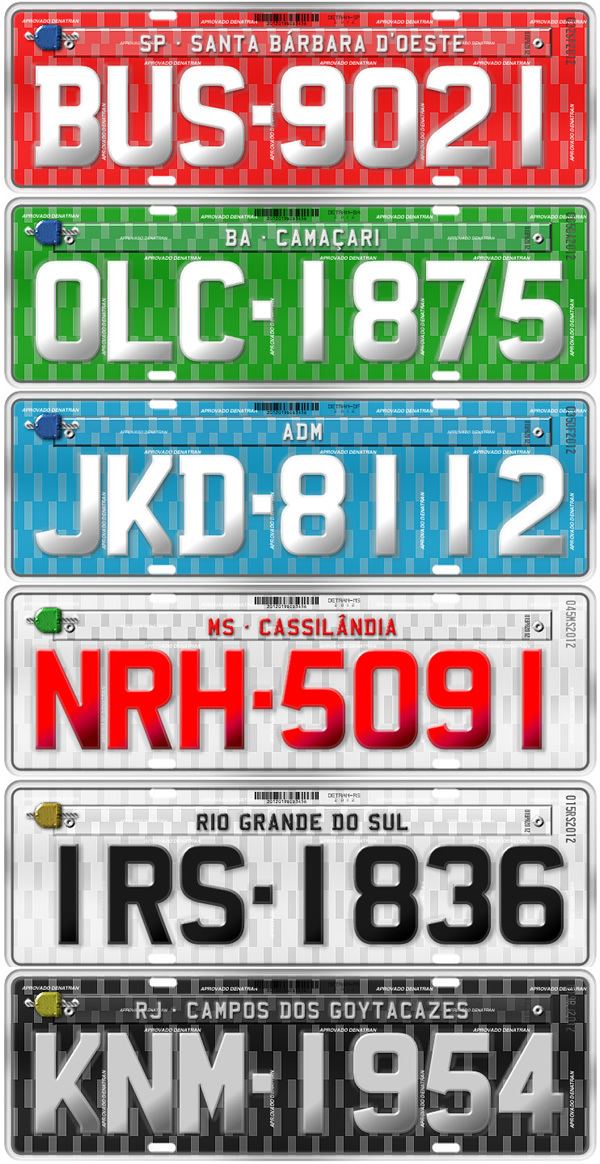 | ||
Similar Vehicle registration plates of Aruba, Vehicle registration plates of Argentina, Vehicle registration plates of Colombia Similar Vehicle registration plates of Paraguay, Vehicle registration plates of Argentina, Vehicle registration plates of Colombia | ||
Brazilian license plates use colour schemes to show their type, and front and rear plates use the same colours: Brazilian vehicle number plates are issued by the states. Each state has a Departamento de Trânsito (DETRAN) that is charged with vehicle registration and car tax collection, but plates are standardized across the country and form a national vehicle registration database.
The current system was created in 1990 and was named Registro Nacional de Veículos Automotores (RENAVAM). It uses the form "LLL·NNNN", where LLL is a three-letter combination followed by a four-digit number with a dot between the letters and numbers. A combination given to one vehicle stays with it "for life" - it cannot be changed or transferred to another vehicle. Vanity plates are allowed as long as they abide to the same standard as non-vanity plates.
Above the combination is a metallic band with the State abbreviation (SP = São Paulo, RJ = Rio de Janeiro, PR = Paraná, AM = Amazonas etc.) and the name of the municipality in which the vehicle is currently registered. This band has to be changed when a vehicle needs to be registered in a different municipality. Rear number plates are bound to the vehicle by a plastic seal. Broken seals invalidate the number plate, which has to be re-sealed by the authorities. Seals need to be broken in order to change State/Municipality tags.
The size of the Brazilian license plates has been standardized to 400 x 130 mm (15" x 5" approx.) in 2008. That standardization also determines a unique typeface known as "Mandatory", which is similar to the typeface used on British plates introduced there in 2001. The Mandatory font can be downloaded free for personal use from K-Type. Plates in Japanese or European size can no longer be used as of January 1, 2008.
The letters on the license plate can describe the state where a vehicle was originally registered. Vehicles relocated from one state to another will show the new state/municipality on the replaceable tag, but it is always possible to determine the place of original registration for a used vehicle by observing the license plate range for each Brazilian State:
